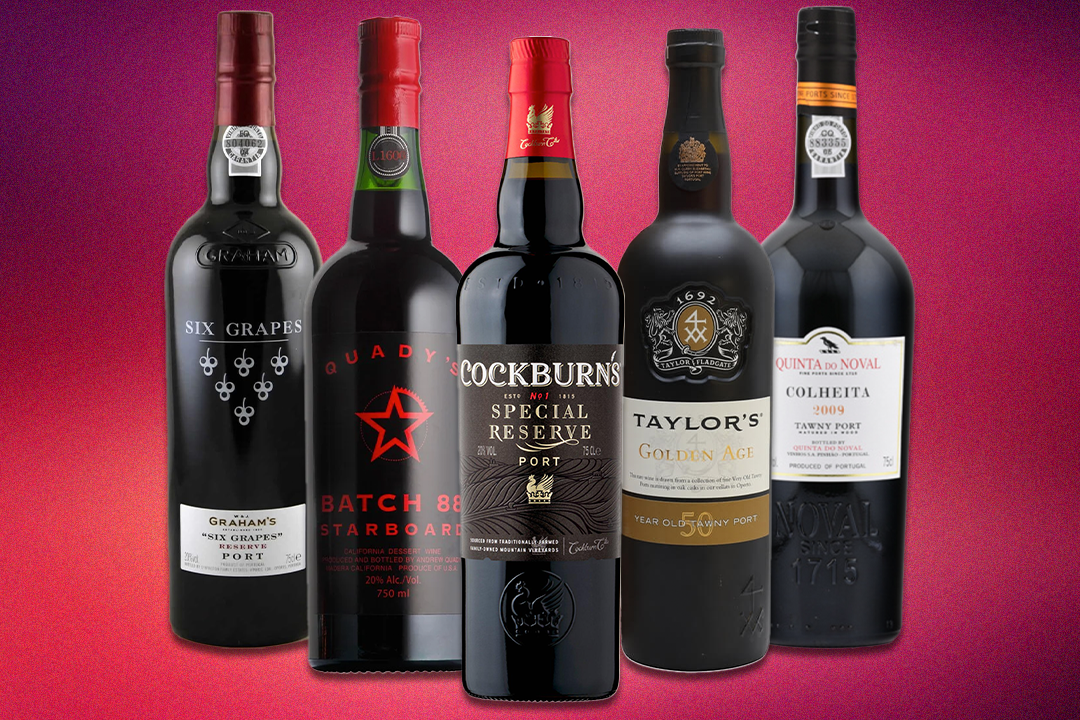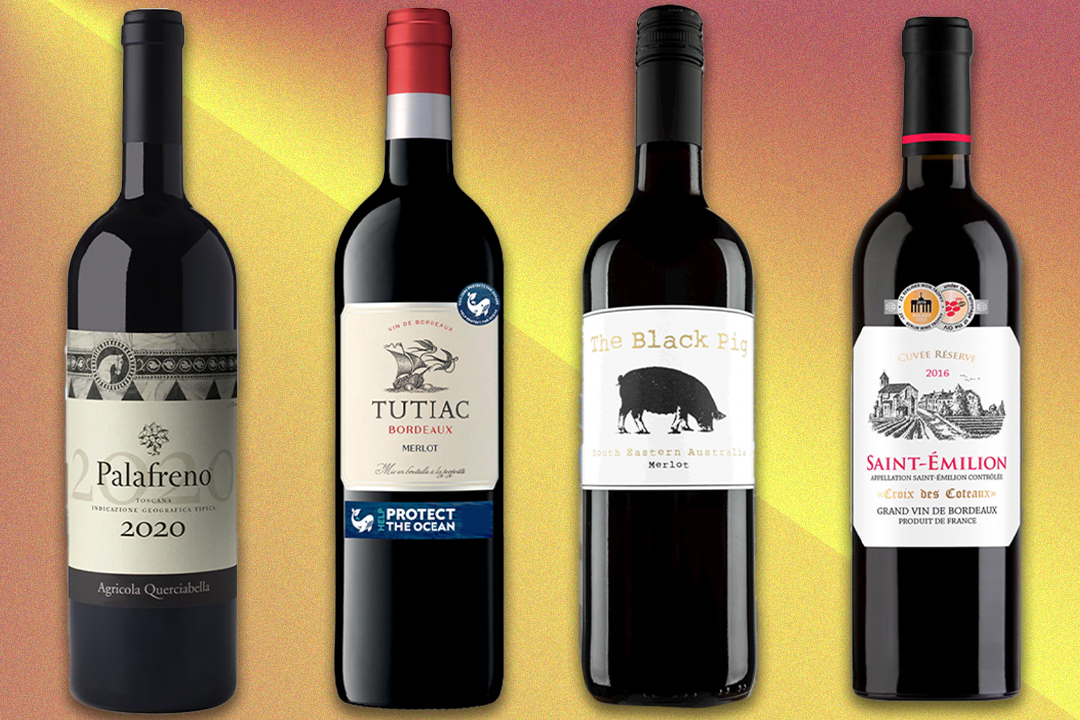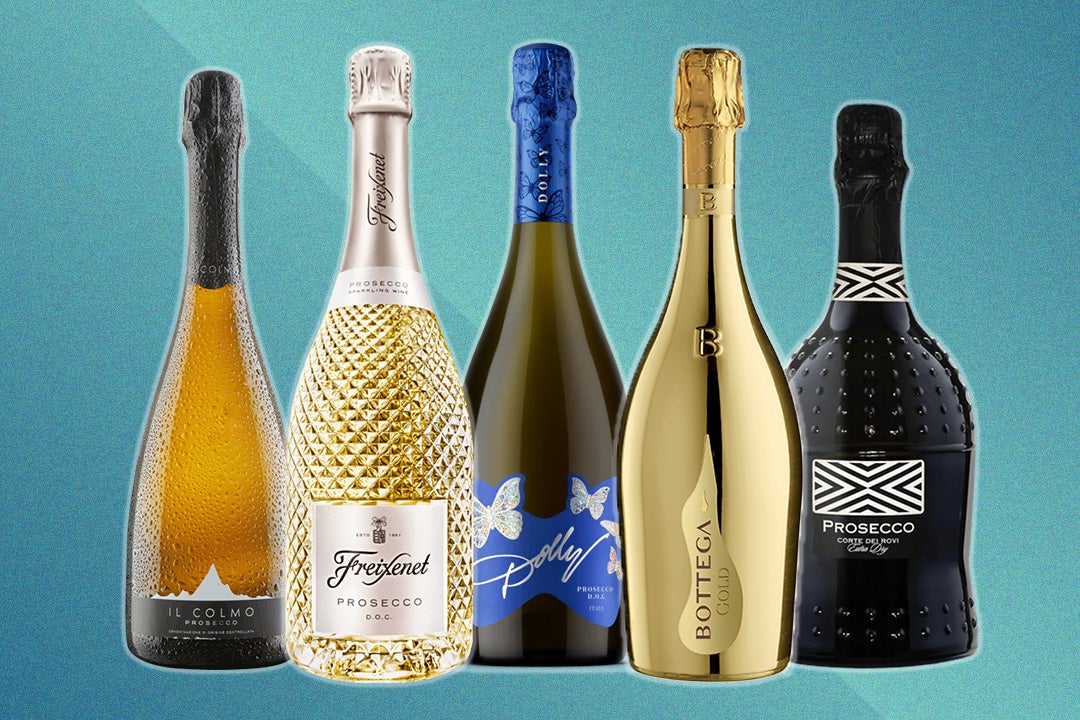
The Independent's journalism is supported by our readers. When you purchase through links on our site, we may earn commission. Why trust us?
10 best armagnacs to replace your favourite cognac
From fruity to decadent, these French brandies deliver on flavour
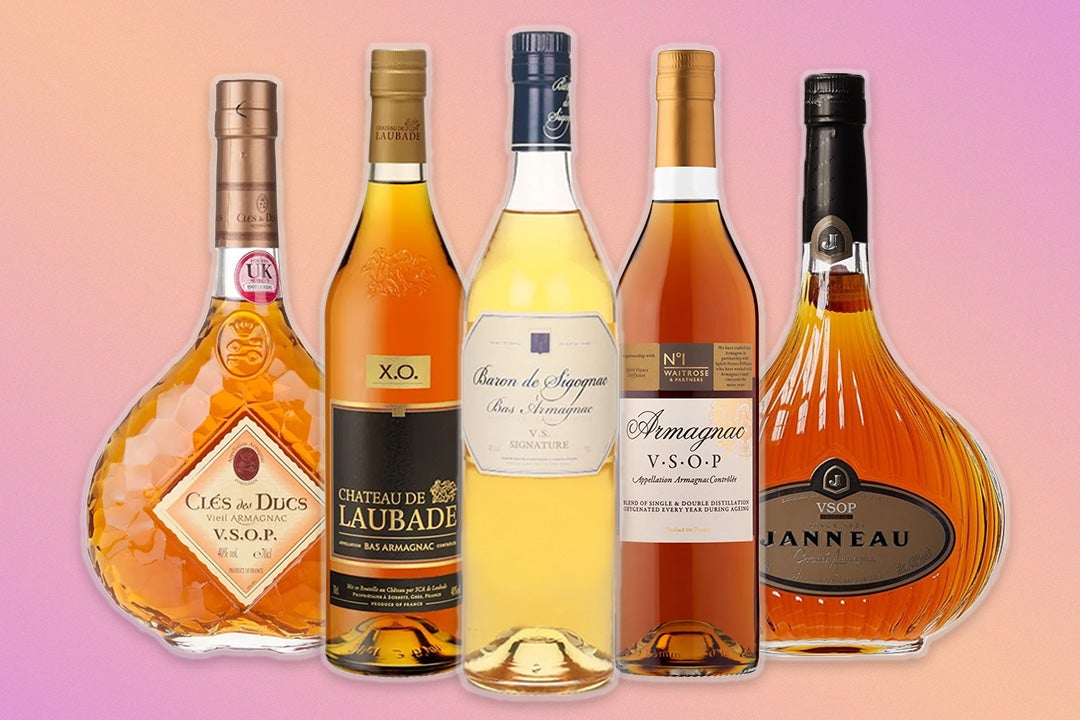
As French brandies go, even the best armagnac may be less well-known than its more popular rival cognac, but armagnac is older, more distinctive and some would say more rewarding. It comes traditionally from Gascony, in southwest France, and from small, often family-owned producers, unlike the big multinational names that dominate cognac production.
The armagnac-producing region is split into three distinct areas: Bas-Armagnac, Ténarèze and Haut-Armagnac. Here flourish the four grape varieties from which the spirit is distilled: ugni blanc, folle blanche, baco and colombard.
If you are still a little confused about the difference between cognac and armagnac, brandy expert David Baker of retailer Brandyclassics explains it all: “Unlike cognac, which is double distilled at a range of 67-72.4C, Armagnac is distilled on a column or continuous still at a range of 52-72.4C. The result is that armagnacs tend to be fruitier but coarser than cognacs.
“Armagnacs distilled at the lower end of the range (52-58C) tend to have flavours of prune, plums and fresh dark fruits, while those distilled at a higher ABV (alcohol by volume) will have more crystalised fruit flavours. By and large, armagnacs can offer two advantages over cognacs: they have always been able to offer single estate vintages, and they use bottling dates to confirm the actual age of the brandy,” says Baker.
So, while cognac may have the big names, armagnac has the romance. Here, we’ve rounded up our favourites, which can be enjoyed whether or not you’re new to armagnac.
How we tested

During testing, most of the armagnacs sampled were tasted, as they should be, after an evening meal or supper – mostly neat but sometimes with a sliver of ice. The white, unoaked armagnac was sampled as part of an enjoyable blanche mojito cocktail. We, of course, considered taste, as well as value for money when choosing which bottles would make it into our final line-up.
The best armagnacs for 2024 are:
- Best overall – Janneau VSOP grand armagnac: £37.79, Amazon.co.uk
- Best budget buy – Waitrose armagnac VSOP: £27.50, Waitrosecellar.com
- Best for cocktails – ODVI armagnac la blanche: £37.73, Masterofmalt.com
- Best traditional taste – Clos Martin XO 15-year-old armagnac: £64, Buonvino.co.uk
- Best VSOP armagnac – Clés des Ducs VSOP vieil armagnac: £41.99, Masterofmalt.com
Janneau VSOP grand armagnac

- Best: Overall
- Size: 70cl
- ABV: 40%
Janneau, with its familiar and traditional basquaise bottles, is the big name in armagnac production. It’s famed for using two types of distillation – single and double – and for producing armagnacs such as this, a VSOP (very superior old pale) that’s a blend of ugni blanc and baco grapes. Matured for up to 20 years in French oak, it supplies honeyed notes of plum and vanilla in a complex and multi-layered palate-pleasing experience.
Waitrose armagnac VSOP

- Best: Budget buy
- Size: 70cl
- ABV: 40%
Produced exclusively for Waitrose, here’s a VSOP armagnac that’s a blend of single and double distilled brandies, from the Bas-Armagnac and Ténarèze regions. Aged in French oak barrels for a minimum of four years, it displays all the flavour-heavy and robust fruit-led characteristics that set armagnac apart from its rival, cognac. At this price, it’s huge value.
Apothicaire de l’Armagnac baco 1983

- Best: Luxury choice
- Size: 50cl
- ABV: 49.3%
If you were a French apothecary – a bit like an up-market chemist – in the 18th or 17th century, you would recommend armagnac to anyone feeling a little under the weather. Hence the name of this limited edition grand cru of armagnacs, distilled in 1983 but not bottled until 2021. It’s a single varietal armagnac made only from the baco grape, in the Bas-Armagnac region, with no blending, added colouring or ageing accelerators. As you would expect from such a lengthy time in the cask, it’s aromatic, rich and wonderfully mellow. Liquid gold, you might say.
ODVI armagnac la blanche

- Best: For cocktails
- Size: 70cl
- ABV: 45%
A white, unaged armagnac bottled directly after distillation, which ODVI co-owners Gabriel and Simon see as the perfect introduction to armagnac for bartenders, cocktail lovers and conscientious customers. What the lack of ageing does is make the fruit flavours of the distilled grapes positively shine through. You could enjoy it as a simple digestif but it’s going to be more fun trying it as part of a cocktail. You’ll find plenty of recipes online.
Delord 20-year-old bas armagnac

- Best: For a taste of history
- Size: 70cl
- ABV: 40%
This first-rate, amber-hued, 20-year-old armagnac comes from a small family company founded by Prosper Delord in 1893 – it’s carried on today by his grandsons, Jacques and Pierre, with the next generation, Jérôme sand Sylvain, waiting in the wings. This armagnac impresses with its glorious notes of brioche and vanilla and hints of prunes and spice. How much care the family takes is exemplified by the finished product. With its hand-written label, wax seal and basquaise bottle, it’s like taking a step into the past.
Baron de Sigognac VS

- Best: Value
- Size: 70cl
- ABV: 40%
This is a VS (very special) or younger armagnac from the Guasch family, the owners of a vineyard that is dedicated exclusively to the production of Bas-Armagnac, using ugni blanc and baco grapes. Aged in oak barrels, this is a balanced and elegant armagnac, with all the characteristic notes of plum and vanilla you would expect, plus a smooth and creamy finish. All-round excellence at a price that’s very competitive.
Clos Martin XO 15-year-old armagnac

- Best: Traditional taste
- Size: 70cl
- ABV: 40%
An XO (extra old) armagnac that has been aged for longer than the statutory 10 years and is distilled from the folle blanche grape, which was the traditional grape for armagnac production until it was superseded by the more disease-resistant baco in the 20th century. So, this bottle offers a taste of traditional armagnac, with a rounded and full-bodied appeal, with apple and dried-fruit flavours mingling with those of prunes and toasted almonds.
Clés des Ducs VSOP vieil armagnac
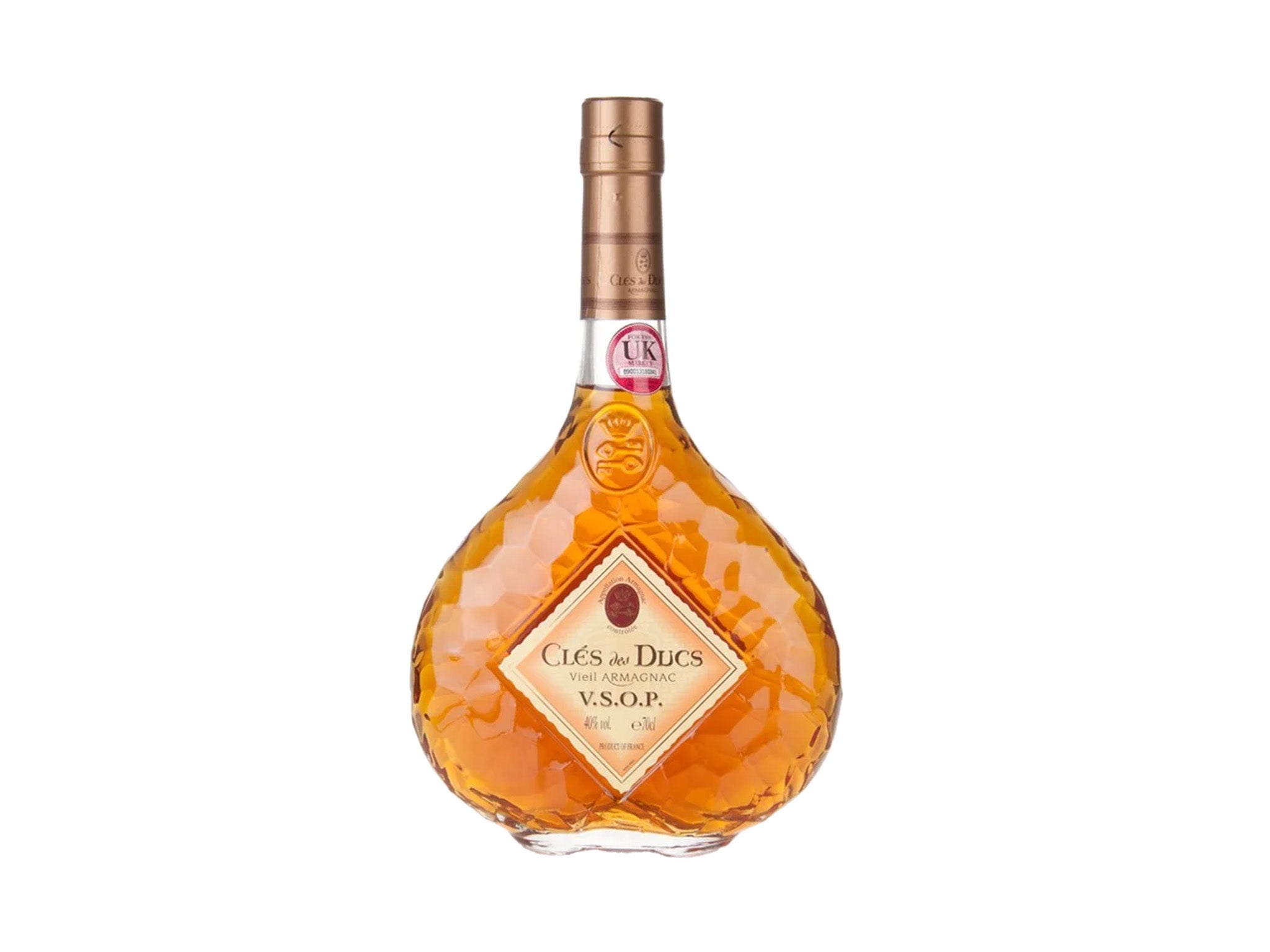
- Best: VSOP armagnac
- Size: 70cl
- ABV: 40%
Big honeyed notes of vanilla and dried fruit are tempered by hints of apricots and spice in this tempting tipple. As with most of the exceptional armagnac, Clés des Ducs (keys of the dukes) is another product of a small company that has been producing great brandies in a small village for well over a century. In this case, the village in question is Panjas (population 426). You can buy a bottle of Clés des Ducs’s earliest vintage, from 1888, for a mere £12,000 but, happily, this VSOP armagnac, aged for 10 years, is a little more affordable.
Château de Laubade bas armagnac XO

- Best: XO armagnac
- Size: 70cl
- ABV: 40%
This is a great example of an XO armagnac from Château de Laubade – the premier armagnac single estate property in Gascony. Here, the organically grown ugni blanc, folle blanche, baco and colombard grapes are vinified separately, then single distilled, separately again in column stills before being aged in French oak from Gascony. The result? An immediate aroma of toasted brioche and citrus peel is reinforced by hints of spice and cinnamon.
Domaine de Cassagnoles 5-year-old Tenareze armagnac

- Best: Ténarèze Armagnac
- Size: 70cl
- ABV: 42%
From an armagnac house that is predominately a wine producer, comes a five-year-old option from the Ténarèze region. Lighter in appearance, the accustomed fruit flavours are more noticeably greengage than plum and are complemented by notes of spice and baked apple. Altogether, it’s smooth and fresh, with a clean finish.
The verdict: Armagnacs
With such a range of armagnacs available, newcomers to the spirit may need to tread warily. Waitrose offer a great entry-level VSOP armagnac at a competitive price, while the VS Baron de Sigognac also brings full flavours and elegance to the table. Meanwhile, those going the whole hog can’t ignore the Apothicaire de l’Armagnac baco 1983. Our best buy overall, however, is the rounded and mellow Janneau VSOP, with its fruit-forward tastes and lingering finish.
Thirsty for more? Check out our guide to the best Scottish single malt whiskies
Voucher Codes







